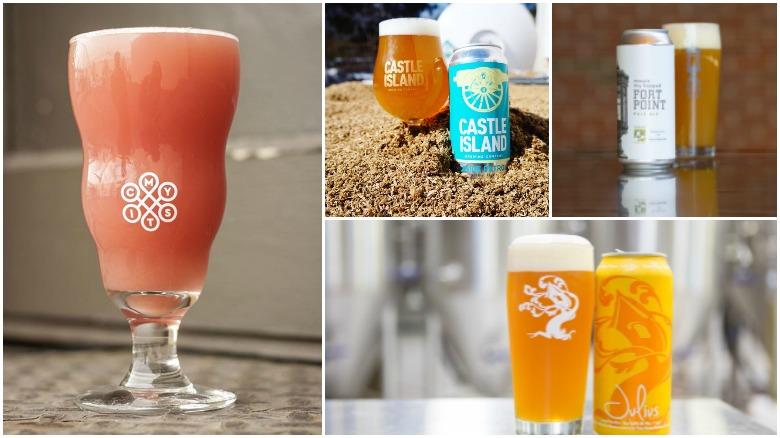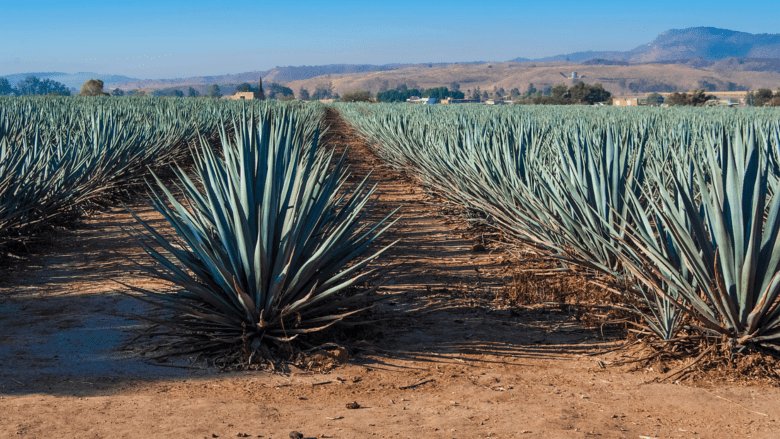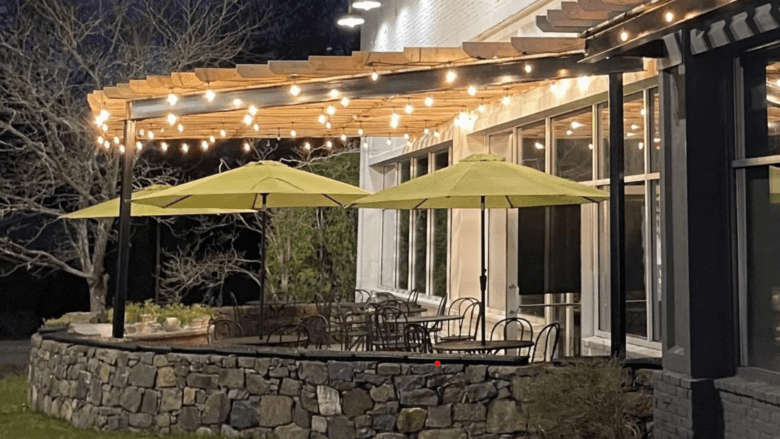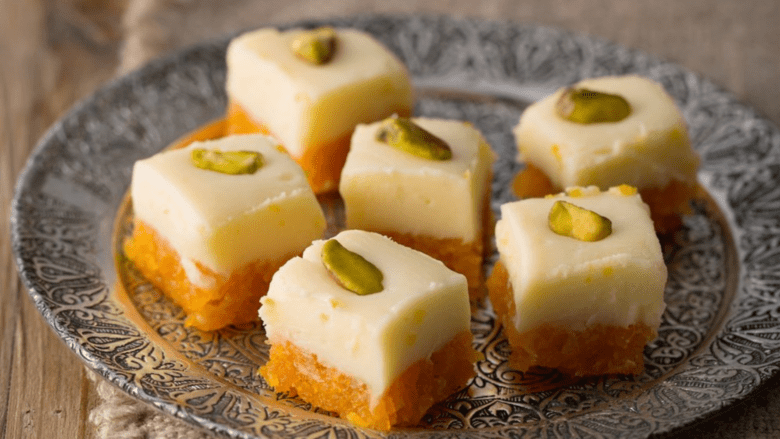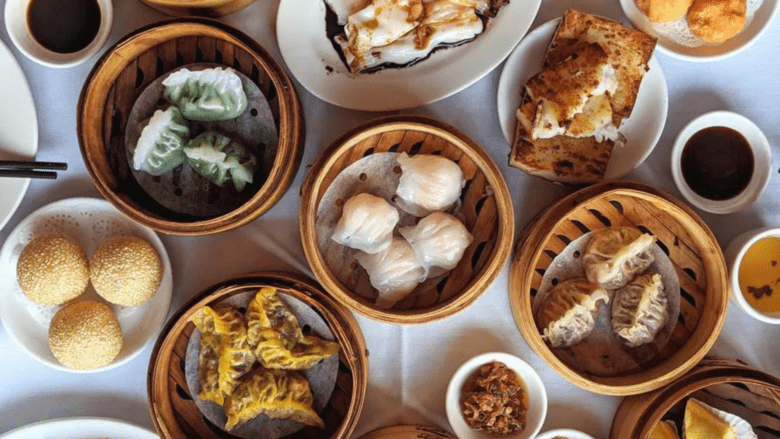When it comes to sippin’ suds, beauty is in the eye of the beer-holder. Which is especially important to keep in mind when your bartender slides you a brew that looks a little different from its friends.
Cloudy beer—once the hallmark of bad brewing or dirty draft lines—is the new it-thing in the world of IPAs, garnering great ratings by aficionados and generating the longest queues at breweries and package stores around the country. As of 2018, the formerly contested category “Juicy or Hazy Ales” became officially recognized by the Brewer’s Association, a national nonprofit responsible for overseeing American craft brewers.
So what’s the deal with this haze craze? Here’s a little background: India Pale Ales have been around for centuries and, until this year the style has been divided into two categories: English and American.
The seafaring Brits invented the IPA, using hops as a preservative to keep beers fresh on long ocean voyages to, say, India. English-style IPAs (anybody remember Harpoon?) are brewed with English yeast and denoted by a malty roundness that balances out the herbal hop profile.
When American brewers got their hands on the recipe, they did what we colonists do best: took something English and made it bigger, louder, and more aggressive. American IPAs are renowned for their intense, bitter hoppiness. At first these hop grenades were considered unbalanced, but the Yankee appetite seems to know no bounds, and breweries like Stone and Lagunitas carved their crafty niche by doubling down on the bracing little nuggets.
But regardless of their differences, one thing these beers all had in common was that they looked like beer. Filtered, homogeneous, and crystal clear, the IPA old guard all play by the same commercial rules as their forebears, creating a stable product with a long shelf-life that could be shipped across the country.
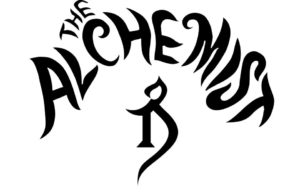 Juicy or Hazy Ales shirk these rules, focusing less on market expansion and more on making the best tasting beer possible. Also called New England IPAs (drink local!), the style originated at Alchemist Brewing in Vermont, where head brewer John Kimmich decided not to filter or pasteurize his Heady Topper IPA in an effort to preserve its more delicate flavors. These days, nearly everyone has heard of Heady—it’s the smooth, cloudy, high-octane nectar your cousin’s roommate makes pilgrimages north to cart home by the trunkful. And while it’s lost a little of its black-market appeal with the opening of a number of worthy (and more accessible) competitors emulating the style, it’s still worth a four hour drive to get some.
Juicy or Hazy Ales shirk these rules, focusing less on market expansion and more on making the best tasting beer possible. Also called New England IPAs (drink local!), the style originated at Alchemist Brewing in Vermont, where head brewer John Kimmich decided not to filter or pasteurize his Heady Topper IPA in an effort to preserve its more delicate flavors. These days, nearly everyone has heard of Heady—it’s the smooth, cloudy, high-octane nectar your cousin’s roommate makes pilgrimages north to cart home by the trunkful. And while it’s lost a little of its black-market appeal with the opening of a number of worthy (and more accessible) competitors emulating the style, it’s still worth a four hour drive to get some.
Categorizing a beer by the way it looks can make it tough to pin down its parameters. New England IPAs are a nebulous category, notable for their pulpy appearance, juicy flavor, and smooth texture. They range from mildly murky to downright dirty-looking, and can come as a shock to drinkers accustomed to clear beer. But fear not: all that stuff floating around in there is pure deliciousness.
One thing these beers are definitely not is filtered. The haze itself is basically a bunch of tiny tiny floaty bits, including hop particles, yeast, oils, and esters that remain suspended in the untampered-with brew. As a result, the final product can be so murky that if you went swimming in a tank of the stuff (we don’t recommend it, but also maybe we do?), you wouldn’t be able to see your hand in front of your face.
But enough about how the beers look. How do they taste?
Juicy. These beers are really, really juicy. Lift one to your nose and you’ll be hit with notes of fruit and citrus from hop varietals like Cascade, Citra, and Mosaic, chosen for their tropical flavor and aroma. And while the hops are strong in these beers, they are double dry-hopped, meaning the resiny morsels are left to infuse post-fermentation rather than added during the boil, imparting a ton of flavor but very little bitterness.
Creamy, with notes of lactose, these IPAs are notable for their smoothness. To borrow from the Urban Grape’s Progressive Scale, if a Bud Light were water (and it mostly is), these beers would be whole milk. The beers smell, taste, and sorta feel like drinking much-improved fruit juice.
So if they’re so great, why haven’t you seen any halftime ads for hazy beers? Because the thing that makes these beers so special and sought-after is also a huge commercial drawback. Without filtration and pasteurization, these babies are alive inside. They have short shelf lives, and that brewlicious flavor needs to be consumed fresh, making them finicky to ship long distances and poorly suited for languishing on shelves. Leaving one of these beers in your fridge for too long isn’t exactly dangerous, but it will definitely result in off flavors, so buyer beware when you’re looking to stock up the home bar.
The upside, of course, is that local favorites are likely to stay local, though the style has already spread to the West Coast. Loyal drinkers across the country are lining up to buy this new category of beer, and the Boston area is rife with talented brewers pushing the envelope of what’s brewable.
Here are some great examples you can find ’round these parts:
Trillium Brewing: their Mosaic Dry Hopped Fort Point Pale Ale is a tropical glassful of gold
Castle Island: try the Juice Patrol, combining four hops and a bunch of booze for an Imperial take on the New England IPA
Mystic Brewing: Bumbleberry Frappe IPA takes a more literal stance on the style’s juicy smoothness, using tons of real berries and lactic acid to double down on the fruity, silky characteristics these hazy beers deliver.
Alchemist: Heady Topper (grab a ZipCar or shanghai your buddy with a whip and get thee to Hazy Beer Mecca)
Treehouse: Julius—looks just like a glass of OJ; who said you can’t have beer with breakfast?
